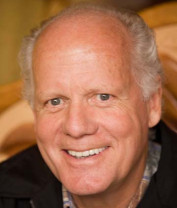|
|
[Editor's note: Below are the first few sections of what is a
rather large article. The complete Thunderblog can be downloaded as
a 22 page 700 KB pdf by clicking
here.]
Our Moon - Window to the Space Age
by David Talbott
|
|
December 15, 2008
|
|
|
Researchers exploring "the electric universe" say that
a comet with its sharply sculpted
surface may have much to tell us about the history of our solar system. Are comet
displays due to electrical discharge as they move through the electric field of the Sun? If
so, they may provide the best example of what happened to planets in the past.
Electrical theorists contend that planets have not always moved on their present,
predictable orbits. Our planetary system evolved through unstable phases in the past,
they say, when certain planets behaved more like comets than the quiet bodies we
observe today. Moving within a sea of charged particles, planets and moons
experienced intense electrical activity, as cosmic "thunderbolts" raked across their
surfaces, excavating material up to miles deep, redistributing sediment and rubble in
layers across continental-scale distances.
|
|
|
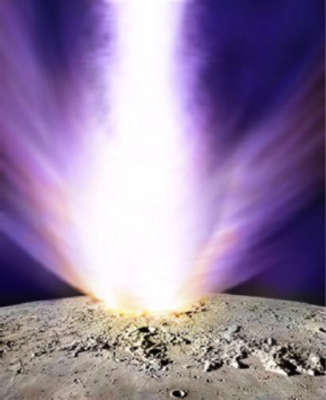
Artistic simulation of a large-scale plasma discharge cutting out a crater on the lunar
surface.
Credit: Wallace Thornhill.
|
|
|
But how can one assess the electrical hypothesis millions of years after the claimed
events? An assessment is possible because most of the rocky bodies in the solar
system have surfaces unaffected by atmospheric or fluid erosion. If electric discharge
carved the surfaces of planets and moons, massive scars should still be visible today. In
fact, some electrical theorists suggest that catastrophic electrical scarring did not cease
until just a few thousand years ago.
Assessing this new vantage point requires a suspension of prior theory - at least long
enough to apply logical tests and fresh critical thinking.
Unsolved Lunar Mysteries
We can make many suggestions about the moon, but we have rather greater difficulty
in proving that what we say is more than just possibilities.
- Harold Urey, The Nature of
the Lunar Surface.
|
|
|
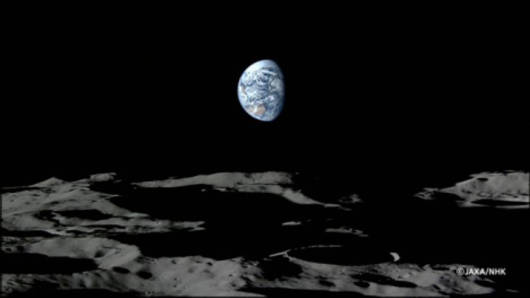
High definition image acquired by lunar explorer "KAGUYA" (SELENE), which was
injected into a lunar orbit at an altitude of about 100 km on October 18, 2007.
|
|
|
At the beginning of the space age our Moon helped to clarify scientistsí expectations as
to what they would find on other rocky bodies in the solar system. For several decades
astronomers debated whether lunar craters were caused by bombardment from space
or by volcanism. These seemed the only alternatives, to conventional astronomers on the
one hand, and conventional geologists on the other. The issue was decided in favor of
the impact hypothesis shortly after
the beginning of the space age, when astronauts walked on the moon and Apollo
mission close-up images of craters excluded the volcanic interpretation. Far too often
the required volcanic vents and lava flows were missing.
For planetary science this was a turning point. Within a few years the vision of scarring
by impact had set the direction of space programs, and billions of dollars were spent
in the confidence that astronomers were asking the right questions. The general rule
became: where there is a crater, an impact occurred in the past. Within discrete regions,
planetary scientists believed they could count craters to determine the age of the
surface.
By the time our space probes reached Venus and Mars, and eventually returned closeup
images of the moons of Jupiter, Saturn, Uranus, and Neptune, prior theories had
frozen into a consensus. And even when our probes later rendezvoused with asteroids
and comets - exceedingly unlikely attractors for meteoric bombardment - many
astronomers came to see these heavily cratered surfaces as a record of impact.
Once the impact theory took hold, planetary scientists sought to replicate experimentally
the unique patterns of cratering on the moon and elsewhere in the solar system.
Occasionally, news releases touted the "successes" of such experiments. But where
unique cratering patterns demanded experimental confirmation, the experiments failed.
The explosive effects of a high velocity impact will not produce the shallow, steep
walled, flat-floored look of numerous craters on the Moon, for example. Not even an
atomic bomb can melt enough material to create a flat-floored depression.
|
|
|
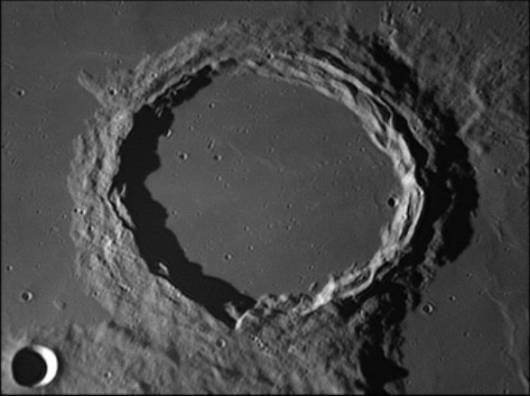
The lunar crater Archimedes is a large lunar impact crater on the eastern edges of the
Mare Imbrium. The crater reveals an exceptionally flat floor and a complex terracing of
walls, a common pattern in cratering by electric discharge. Credit: Damian Peach 2006.
|
|
|
|
The consistent circularity of craters, the lack of collateral damage where one crater
overlaps with another, enigmatic terracing of crater walls, chains of smaller craters
along the rims, and innumerable concentrations of crater chains across the lunar
surface, all posed questions yet to be resolved.
|
|
|
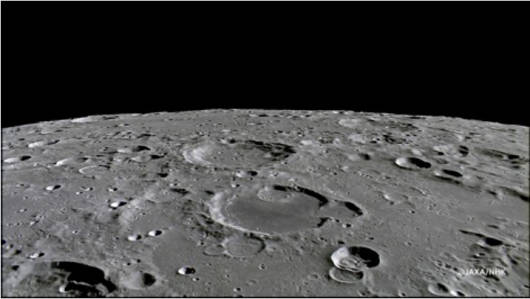
This high resolution KAGUYA image of the lunar south pole emphasizes more than one
challenge for the impact explanation of crater formation. The challenge comes from the
large flat-floored crater toward the center of the picture, the terracing of the crater behind
it, and the repeated placement of adjoining or overlapping craters with no collateral
damage by the one to the other.
|
|
|
Even before scientific opinion had converged on the impact theory, a much different
possibility was being explored by the amateur astronomer Brian J. Ford. He suggested
in the British journal Spaceflight that most of the craters on the moon were carved by
cosmic electrical discharge. (Spaceflight 7, January, 1965). In Ford's experiments, he
used a spark-machining apparatus to reproduce in miniature some of the most puzzling
lunar features, including craters with central peaks, small craters preferentially perched
on the high rims of larger craters, and craters strung out in long chains. He also
observed that the ratio of large to small craters on the Moon matched the ratio seen in
electrical arcing. Unfortunately, the scientific mainstream took no notice, and no
mainstream researcher or institution followed up on Ford's investigation.
On the eve of the first Moon landing on July 21, 1969, the New York Times invited the
controversial theorist Immanuel Velikovsky to anticipate what might be found. A
colleague of Albert Einstein, Velikovsky was the author of the best selling book on
planetary catastrophe, Worlds in Collision, published in 1950. Responding to the
invitation, he suggested that rayed craters on the Moon were the result of electric arcs--
cosmic thunderbolts between planets in near collision. Since terrestrial lightning can
magnetize surrounding rock, Velikovsky predicted that lunar rocks would be found to
contain remanent magnetism. Astronomers saw no reason to consider such
possibilities, and they were caught by surprise when lunar rocks returned by Apollo
missions did indeed reveal remanent magnetism.
Hannes Alfvén
Throughout the twentieth century, astronomers showed only a limited appreciation of
plasma science, and most ignored the role of electric currents in space plasma, a
subject largely unfamiliar to them. Their elegant theories rested on the assumption that
gravity alone is the ruling force in the heavens. Electricity does not "make things
happen" in space.
|
|
|
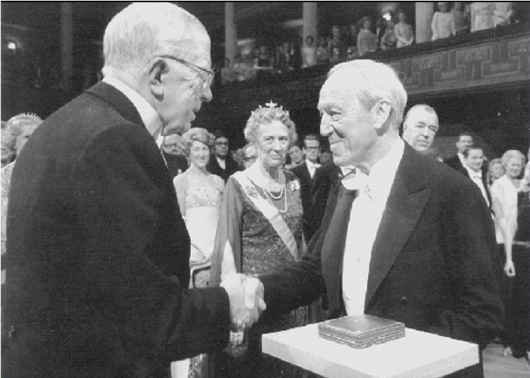
Hannes Alfvén, the father of modern plasma science, receiving his Nobel Prize from the
King of Sweden in 1970.
|
|
|
Through systematic observation and experiment, Hannes Alfvén, the father of modern
plasma science, came to a contrary viewpoint. In his acceptance speech for the Nobel
Prize in 1970, he warned astronomers that the study of plasma behavior requires
attention to experimental plasma dynamics. Sadly, he observed, the plasma universe
became “the playground of theoreticians who have never seen a plasma in a laboratory.
Many of them still believe in formulae which we know from laboratory experiments to be
wrong.” Alfvén warned astronomers against ignoring the role of electric currents in
space because, under certain conditions, the gravity of a star or galaxy would give way
to something else - the electric force, which is inherently many billions of times more
powerful than gravity.
According to Alfvén, all stars have electrical circuitry. Equatorial "current sheets"
encircle stars, and the movements of charged particles aligned to magnetic fields form
polar current streams. The local circuits of the Sun are part of the larger circuitry of the
Milky Way, in a web of connectivity he said. In the end, Alfvén concluded that
gravitational systems in space are the "ashes" of electrical systems. Most formative
events begin electrically.
Gravity-defying behavior of stars and galaxies may, in fact, provide essential clues to
the early history of our own cosmic neighborhood, the solar system. Irregular
movements of planets and intense electrical events in the past can no longer be
excluded. And most importantly, events we observe on planets today cannot serve as a
reliable guide to events in the past.
... Further Chapters:
Craters on the Moon
The Crater Aristarchus
The Mystery of Lunar Rilles
Hadley Rille
Crater Chains
Download
the entire Thunderblog in pdf format. (700 KB)
[Erratum Dec 19, 2008: On page 12 of the pdf (available on site as from Dec 15) the second image
on the page was not an image of Aristarchus, as it should have been. This has now been
corrected and the pdf updated accordingly. The text following the image
was altered slightly to reflect this change. We apologize for any
inconvenience this may have caused.]
|
|
|
|
[Editor's Note: This Thunderblog is a copy of an article published by the Japanese
magazine Kaze No Tabibito and is the first
in a series of articles comissioned by that publication in a
scholarly exploration of the Electric Universe.]
|
|
|
Permalink to this article.
Public comment may be made on this article on the
Thunderbolts Forum/Thunderblogs (free membership required).
|
|
|
|
|
|
|









